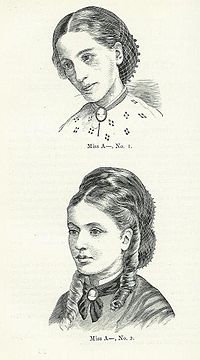
Usefulness, pitfalls and interpretation of handheld single‑lead electrocardiograms.
Sign Up to like & getrecommendations! Published in 2021 at "Journal of electrocardiology"
DOI: 10.1016/j.jelectrocard.2021.02.011
Abstract: Single‑lead electrocardiograms (1 L-ECGs) are increasingly used in (pre)clinical settings for the detection and monitoring of a range of rhythm and conduction disorders. In this short communication paper, we aim to provide an overview of the… read more here.
Keywords: lead; usefulness pitfalls; pitfalls interpretation; single lead ... See more keywords

Arrhythmia classification of 12-lead and reduced-lead electrocardiograms via recurrent networks, scattering, and phase harmonic correlation
Sign Up to like & getrecommendations! Published in 2022 at "Physiological Measurement"
DOI: 10.1088/1361-6579/ac77d1
Abstract: We describe an automatic classifier of arrhythmias based on 12-lead and reduced-lead electrocardiograms. Our classifier comprises four modules: scattering transform (ST), phase harmonic correlation (PHC), depthwise separable convolutions (DSC), and a long short-term memory (LSTM)… read more here.
Keywords: reduced lead; lead reduced; lead electrocardiograms; correlation ... See more keywords

A novel approach for obtaining 12-lead electrocardiograms in horses.
Sign Up to like & getrecommendations! Published in 2020 at "Journal of veterinary internal medicine"
DOI: 10.1111/jvim.15980
Abstract: BACKGROUND In equine medicine, 12-lead electrocardiograms (ECGs) rarely are used, which may in part be a result of shortcomings in the existing guidelines for obtaining 12-lead ECGs in horses. The guidelines recommend placing the limb… read more here.
Keywords: medicine; ecg; obtaining lead; method ... See more keywords

What training should psychiatrists have to interpret six- and 12-lead electrocardiograms?
Sign Up to like & getrecommendations! Published in 2023 at "BJPsych bulletin"
DOI: 10.1192/bjb.2022.87
Abstract: To monitor for drug-related cardiac arrhythmias, psychiatrists regularly perform and interpret 12-lead (12L) and, increasingly often, six-lead (6L) electrocardiograms (ECGs). It is not known how training on this complex skill is updated or how well… read more here.
Keywords: interpret six; training psychiatrists; ecg interpretation; lead electrocardiograms ... See more keywords